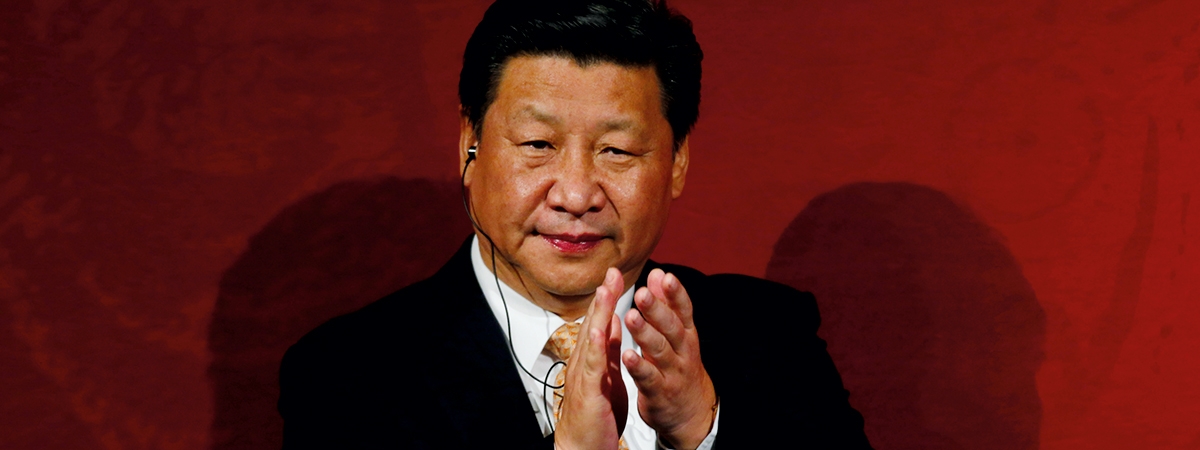We hear a great deal about the power and might of the risen China and the man sometimes called its “ruler for life,” President Xi Jinping. But what does the supreme ruler of China want to do with all this power? Only knowing that can we comprehend where Australia fits into his plan.
We know some of Xi’s grand aims for his nation. And we know his big taboos, too. He has declared the pursuit of the “China Dream” to be the overarching ambition of his time. The dream, he says, is the “rejuvenation of the great Chinese nation.” Xi is clear about what his dream includes. Such as being a “moderately well-off society” by 2021. He doesn’t specify, but if you apply the informal rule of thumb that defines a middle-income country as having US$10,000 in income per head annually, China is on track to surpass this a year or two early, putting it in the same income league as Malaysia and Russia by the end of 2019. And Xi dreams of a fully rich China by 2049, the centenary of Mao Zedong’s founding of the People’s Republic. The country will be “closer to centre-stage” of world affairs, in Xi’s vision. This refers to China’s ancient name for itself – the two characters that are sometimes translated as “Middle Kingdom” can also be rendered “Central Kingdom.”
A fond fantasy? Not at all. China’s economy was the biggest in the world for at least half a millennium, until as recently as 1820. It is not inevitable that it will vault over the United States to recover that title, but it is likely, and likely by about the time today’s newborns are ready to start high school. It’s a distinction without much of a difference. China will have about the same economic heft as the US, maybe a bit more, maybe a bit less. But whichever it is, it is already well advanced towards superpower status, its economy as big as those of the entire European Union and Japan put together. Economic bulk is the base feedstock of national power. Even at today’s subdued growth rate, China’s economy is adding so much new activity that it’s “growing” another Australia every two years.
Imperial China, a world leader in technology, also pioneered the capable, modern nation-state. It took Europe almost two millennia to catch up. China is again thrusting to the forefront of technological know-how and pioneering a more effective nation-state. For instance, in less than half the time Australia has spent debating inconclusively whether to build a single fast rail line to connect its major cities, China built a network of over 20,000 kilometres of fast rail.
Its return to imperial-era greatness has many modern touches. To keep the kids connected to the spirit of nation-building, China’s gaming behemoth, Tencent, launched a new game. Patriotically titled Homeland Dream, it went live just in time for celebrations of the seventieth anniversary of the founding of the People’s Republic this year. As described by The Financial Times, the game “allows players to build virtual cities filled with Communist slogans and landmarks.” It went instantly to the top of the list of most popular games. “For China’s biggest video game company, a patriotic business strategy appears to be paying off.” Unpatriotic ones are less likely to succeed. Every new game needs the approval of the state. And for lovers of liberty who fret over China’s tech-enhanced surveillance and control – the US-based independent watchdog organisation Freedom House has dubbed the game “techno-dystopian expansionism” – China has become hyper-capable in a troubling way.
The spirit of the once-mighty empire that built the Great Wall and the Great Canal is taking concrete form once more with Beijing’s imperial-scale ambition for its vast intercontinental Belt and Road scheme for connecting the world through Chinese money and power. The Central Kingdom has every prospect of being much “closer to centre-stage,” just as Xi wishes.
And by the same date of 2049, he sees Beijing “recovering” the self-governing democratic island of Taiwan for the Chinese Communist Party (CCP), a prospect that troubles most of Taiwan’s 24 million people. It’s no coincidence that Hong Kong’s special autonomy under the “One Country, Two Systems” formula is due to expire in the same year.
That’s what Xi wants. A country as rich as the richest on earth, with all its territories united under the centralised rule of the CCP, in a magnificent restoration of China’s sovereign splendour before it was torn apart by British, European and Japanese forces after 1842. That was the beginning of what China calls its “century of humiliation.” Xi’s dream is to end the ignominy in glory.
Xi intends to be nothing less than a threshold figure in world history. The Soviet Communist Party collapsed because “in the end nobody was a real man,” Xi said in his first months in power. Implicitly, he was asserting that only a “real man” could hold China together. He was that man. The iron fist had announced itself. There would be no ideological wavering or political timidity. He changed China’s constitution, removing term limits for the leader, so he could rule indefinitely.
CONTINUE READING
This is an extract from Peter Hartcher's Quarterly Essay, Red Flag: Waking Up to China’s Challenge. To read the full essay, subscribe or buy the book.
ALSO FROM QUARTERLY ESSAY












